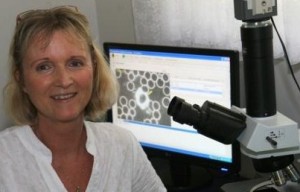Coffee, the great liver detoxifier and the gall bladder connection
With Sue Kira
Many people these days are into doing a liver and gall bladder flush using a heroic combination of olive oil and lemon juice, drunk in large quantities and followed by a chaser of Epsom salts.
There is no dispute as to the effectiveness of this therapy, as I have seen many a gall stone flushed this way myself, but another therapy for the good old liver also bears mention, and this is in the use of coffee in an enema or colonic irrigation.
Max Gerson, famous for his treatments to cancer sufferers, uses coffee enemas as an integral part of his programs. Research has shown that enemas made from drip ground boiled coffee prove themselves advantageous in restoring a dysfunctional liver.
The caffeine in coffee administered rectally definitely detoxifies the liver.
During a 1985 conference on cancer treatment, specialist Harold Manner discussed the internal workings of a coffee enema, stating that while the coffee is being retained in the bowel for 12-15 mins, all of the body’s blood passes through the liver every three minutes.
The heamorrhoid blood vessels dilate from exposure to the caffeine, in turn the liver’s portal veins dilate too. Simultaneously, the bile ducts expand with blood, the bile flow increases, and the smooth muscles of these internal organs relax.
The blood serum and its many components get detoxified as the vital fluid passes through the individual’s liver.
The water being retained by the bowel stimulates the visceral nervous system promoting peristalsis (the rhythmical contractions of the colon).
So much water delivered through the bowel dilutes the bile and causes an even greater increase in bile flow.
There is a flushing of toxic bile which is further affected by the body’s enzymatic catalyst known as Glutathione-S-Transferase (GST).
The GST is increased in quantity in the small intestine by 700%, which is an excellent physiological effect, because this enzyme quenches free radicals.
These quenched radicals leave the liver and gallbladder as bile salts flowing through the duodenum.
The bile salts then get carried away by peristalsis in the gut, traveling from the small intestine, through the colon and out the rectum.
By now you may be wondering if drinking coffee can have the same effect, well unfortunately for coffee lovers it doesn’t.
On the contrary drinking coffee virtually ensures reabsorption of toxic bile. While other agents classed as stimulators of bile flow (choleretics) do increase bile production from the liver, they hardly enhance any detoxifying by that organ’s enzyme systems.
Instead, choleretics do nothing to ensure the passage of bile from the intestines.
It’s a physiologic fact that bile is normally reabsorbed up to ten times by the body before working its way out of the intestines.
The enzyme-intensifying ability of the coffee enema is unique among choleretics, because it does not allow reabsorption of toxic bile by the liver across the gut wall, so it is an effective means of detoxifying the blood stream through existing enzyme systems in both the liver and small intestines.
These enzyme systems are responsible for the conversion and neutralisation of the four most common tissue toxins, polyamines, ammonia, toxic-bound nitrogen, and electrophiles, all of which can cause cell and membrane damage.
Such protective gut and liver enzyme systems are massively increased in their beneficial effects by coffee enemas or colonics.
In summary, research has shown that coffee administered rectally will accomplish the following physiological benefits: It dilutes portal blood and subsequently, the bile.
Theophylline and theobromine, major nutriceutical constituents of coffee, dilate blood vessels and counter inflammation of the gut. The palmitates of coffee enhance glutathione-S-transferase which is responsible for removal of many toxic radicals from blood serum.
After many years of personally using coffee colonics in the clinic for not only people with cancer or other debilitating diseased states but also for general detoxification of the liver, and explaining how it works to many people along the way, I hypothesised and idea.
The ideas was that if the vein inside the rectum, otherwise known as the hemorrhoid vein, is dilating and causing subsequent dilation of the hepatic portal vein at the liver and gallbladder end of the body, then the reverse might also be true.
That is, if the heamorrhoid vein is constricted such as in hemorrhoids then the hepatic portal vein may also be constricted meaning that the bile isn’t flowing from the liver and or gallbladder and may be due to obstruction due to gallstones or at least congestion of this area.
This is only a hypothesis of mine but the more I talk to people about their condition the more this seems to be proven right. Some people get hemorrhoids from pushing in childbirth or from constipation.
The constipation often is a result of inadequate bile flow, as bile acts as a natural laxative, consequently people with loose stools often have too much bile flow happening due to an overactive gallbladder.
As for childbirth, I can relate to popping a hemmy from pushing the bub out, but this disappeared after a short healing process, so there shouldn’t be a hemmy years after child birth unless something is still happening to aggravate the situation.
I have also noticed that not everyone is aware they have a hemorrhoid as these are often internal.
To finish off, I would like to say that coffee administered rectally can be a helpful adjunct to any health therapy whether you have any problems with bowels liver, gallbladder or not, as to have good liver health is to LIVE®.
Coffee, the great liver detoxifier, really.
Originally published in Here & Now magazine, written by Sue Kira, from True Vitality
Share Coffee, the great liver detoxifier with your friends on Facebook

Leave a Reply